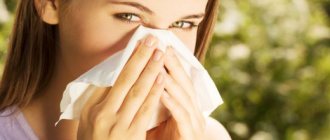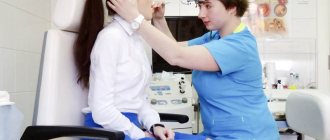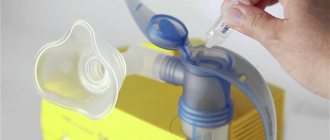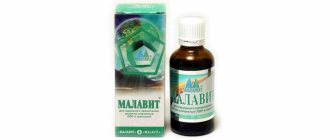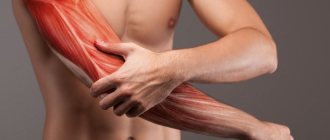- Sinusitis and warming up
- Indications for warming up
- Features of the procedure
- How does heat affect?
- Warming up with an egg
- Warming up with salt
- Blue lamp
- Heating with steam over potatoes
- Inhalations with aroma oils
- Other warming methods
- Contraindications for warming up
- Prevention of sinusitis
- Recommendations
Sinusitis is a dangerous pathology, characterized by rapid development and severe course. Therapy involves taking medications, performing physical procedures, and using folk remedies. Patients often wonder: is it possible to warm the nose with sinusitis?
Sinusitis and warming up
Inflammation of the maxillary sinuses is a fairly common disease, which can be identified by a number of signs:
- nasal voice;
- deterioration in general health;
- painful sensations in the nose area;
- nasal congestion and difficulty breathing;
- redness and swelling under the eyes;
- tearfulness;
- swelling;
- conjunctivitis.
The disease occurs in acute and chronic forms and is classified into several types:
- traumatic;
- bacterial;
- viral;
- fungal;
- allergic;
- mixed;
- aerosinusitis.
The type of sinusitis depends on the causes of the disease. A specialist should choose a treatment plan. Without determining the nature of the pathology and the cause of its occurrence, it is impossible to resort to warming procedures. In some cases, for example, with traumatic sinusitis, this procedure can aggravate the problem, lead to swelling and increased inflammation, which will lead to serious complications.
Using cold compresses
The use of cold is recommended for fresh injuries due to any cause. This reduces blood flow to the injured area, helping to reduce swelling and tissue damage that accompany inflammation.
Cold causes numbness, so use ice without medication to reduce pain while helping the affected area begin the healing process. Another added benefit of using ice is that it helps reduce muscle spasms. Ice packs are the most common way to apply cold, even a bag of frozen peas is enough to do the trick. Knowing when to use cold therapy is important for quick recovery from a recent injury or sudden onset of pain.
3 ways to supply cold:
Ice is good for many types of injuries. Here are 3 ways to apply ice:
Ice bag - small pieces of ice in a plastic bag. Hold for 10-20 minutes.
Reusable ice packs – often contain gel or chemicals. Always use a thin cloth barrier and keep on for up to 30 minutes.
Ice Massage – Rub pieces of ice over the painful area in a circular motion. Stop if your body goes numb.
Indications for warming up
The medical community is still debating the effectiveness of heating for sinusitis. It is impossible to warm the sinuses to a temperature at which bacteria die. But the disease includes periods during which heating provides improved blood supply and activates the body's defenses.
Physiotherapeutic procedures, in particular heating for sinusitis, have a beneficial effect in the following stages and forms:
- Chronic – a stage in which symptoms are weakened and insignificant.
- The initial stage of viral sinusitis. At this stage, patients suffer from a seemingly ordinary runny nose, unaware of the development of sinusitis.
- The final stage of treatment of acute sinusitis. The symptoms have subsided, the patient's condition has improved significantly, but the sinuses need to be restored after the illness.
Sinusitis: causes of the disease
The main reason for the development of sinusitis is infections that are spread by bacteria or viruses. They enter the maxillary sinus through the nasal cavity or from the area of inflamed upper teeth.
The risk of development also increases:
- conditions that impair breathing through the nose: deviated septum, vasomotor or hypertrophic rhinitis, in children - adenoids, runny nose as a result of allergies;
- immune disorders as a consequence of long-term chronic diseases;
- untimely and/or improper treatment (usually self-medication) of colds, acute respiratory infections, rhinitis;
- congenital anatomical pathologies of the nasal cavity;
- hypertrophy of the nasal concha, which leads to difficulty breathing through the nose.
How does heat affect?
Warming procedures for sinusitis are effective in some cases. But this method of treatment must be agreed with a specialist. It can be carried out at the first stage of the disease, before pus forms and the temperature rises. The procedure is also carried out at the final stage of treatment, when the sinuses have already been cleaned and their speedy restoration is required. In these cases, heat has a positive effect, helping to speed up the healing process. However, during the acute stage, heating is not recommended, since heat makes the mucous membrane looser, promoting faster growth of bacteria and complicating the course of the disease.
Heating treatment should be carried out carefully, especially for children. It is important that the agents used to warm the sinuses do not cause burns to the skin and mucous membranes. The duration of warming up and the frequency of procedures is determined by the doctor.
How to recognize the cause of nasal swelling and the type of runny nose?
Treatment of a runny nose, accompanied by swelling of the mucous membrane, should influence the cause of the disease. Nasal congestion accompanies many diseases, but in order to choose the right methods and drugs for treatment, you need to be able to distinguish between them.
Swelling of the nose without a runny nose is usually the result of injury or any defects in the cartilaginous and bone structures of the nose 3. The problem bothers the person constantly and is not particularly amenable to any treatment methods.
Pronounced purulent discharge in large quantities often indicates a bacterial infection. Additionally, the following symptoms may appear:
- Temperature increase;
- Cough;
- A sore throat;
- Body aches;
- Marked weakness.
If the discharge is serous, that is, transparent and liquid, resembling water, then we can talk about a viral infection. A distinctive feature will be the sudden appearance of symptoms and their connection with hypothermia and contact with other patients.
An allergic reaction is characterized by the appearance of swelling and runny nose at a certain time. Rhinitis is caused by direct contact with the allergen. A runny nose will bother you during the flowering period of the plant, when you are near certain flowers, bushes or trees. A reaction to animal fur appears upon contact with them (can affect all animals or specific species). Specific signs of an allergic nature of a runny nose: lacrimation, frequent sneezing, itching and burning sensation in the nose, the appearance of clear discharge.
Warming up with salt
One of the properties of table salt is its ability to retain heat for a long time. To warm the maxillary sinus, it is better to use coarse salt. It is necessary to heat the salt in a frying pan and pour it into a fabric bag. Cool and apply to the sinus area. If there is burning or discomfort, you can apply a thin cloth. It takes 10-15 minutes to warm up.
Important!
You can go outside after an hour.
The procedure helps remove mucus and allows you to restore normal breathing through the nose.
Tips for choosing a first aid method
Hazards vary from workplace to workplace. Now that the methods of applying heat and cold have been explained a little, a few tips below will help you choose the right treatment for your pain or injury.
Fresh injuries do not require heat
Applying heat to a new wound will only increase blood flow to the area. This will aggravate the injury as it increases the inflammatory process. Even for acute muscle pain, avoid heat as a fresh injury needs time to reduce inflammation first.
Cold for swelling and bruising
Fresh bruise or swelling from an acute injury? Ice is the way to go when you have swelling or bruising from a recent injury. Cooling will help reduce swelling and reduce blood flow to the affected area.
Muscle pain varies
Hot and cold compresses can be a friend for muscle pain, but timing and circumstances are critical when choosing. Acute muscle pain and muscle injuries can be reduced by applying cold—especially during the first 72 hours.
Once the inflammation has subsided, you can switch to heat to speed up healing. If you are unsure, be sure to consult with your healthcare provider. Remember, heat is best used for muscle fatigue and stiffness.
Using heat or ice for pain can cause some confusion. Both products have their benefits when it comes to managing discomfort, but if used incorrectly, they can do more harm than good.
Contact us to find out what health and safety services we can provide to help your team members stay healthy and productive!
Blue lamp
As an additional measure to the main treatment, warming up with a Minin reflector is carried out. Exposure of the sinuses to a blue lamp provides an antimicrobial and antiviral effect. IR rays warm up the epithelial layer, slightly dry the mucous membrane, and help relieve pain symptoms. After the procedure, nasal breathing improves.
The blue lamp must be kept at a distance of 15-20 cm from the nose. At a shorter distance, there is a possibility of getting a skin burn, and at a remote position, there will be no desired effect. The procedure is performed with eyes closed three times a day for 10 minutes. The course of treatment is 7-10 days. Use for children is allowed, but this method of treatment cannot be used by pregnant women.
Is it possible to warm the nose of adults and children?
This treatment method is effective when the first signs of the disease appear. As a rule, warming up the nose begins after 4-5 days. In general, warming the nose with salt or food or special devices is recommended when:
- body temperature not higher than 37.0 degrees;
- there are no allergic manifestations or susceptibility to them;
- clear mucus discharges from the nose;
- During the examination, the ENT doctor did not find adenoids or polyps.
The procedure brings the greatest benefit when rhinitis from an acute form develops into a chronic one. But in any case, it is advisable to consult with doctors in advance, especially if you are treating a child.
For children, it is often recommended to use a blue lamp, which prevents contact with skin. It strengthens the walls of blood vessels and kills pathogens. Cells are restored faster, and painful processes go away.
For pregnant women, warming the nose with salt during a runny nose becomes a salvation. It replaces the unwanted use of medications and is not harmful to health. With the help of a folk method, it is possible to quickly relieve congestion. Home therapy is complemented by rinsing the nose with saline solutions and instilling oil drops.
Other warming methods
In addition to home methods for treating sinusitis, warming procedures are also performed in clinics. Physiotherapeutic procedures are carried out using:
- laser;
- electromagnetic radiation;
- Sveta.
The UHF procedure during which plates are applied to the sinuses helps well with sinusitis. Exposure to heat ensures accelerated blood flow and lymph outflow, and improves the permeability of vascular walls. The session lasts 15 minutes.
UV irradiation is carried out using a tube, which is installed in the nasal passages. Exposure to ultraviolet light activates the body's defenses and actively fights pathogenic microorganisms.
Ultrasound therapy provides vibrations and heat, which leads to the acceleration of biochemical processes. During the procedures, drugs are used that allow ultrasound to penetrate better and provide an effective effect.
Methods for treating a persistent cough
After ARVI, I have a lingering dry cough. How to convert it to wet? How many days can the cough last? And should I start taking antibiotics?
Firstly, doctors do not distinguish between dry and wet coughs. The cough can be productive or nonproductive. That’s why the doctor asks the patient: “Are you clearing your throat?” To effectively remove mucus, you need to take phlegm thinners. These are so-called mucolytics with active ingredients - acetylcysteine, carbocisteine, ambroxol, fenspiride, ergosten. By the way, do not confuse mucolytics with mucaltin, plant-based tablets (mouse grass, marshmallow, licorice, plantain, trifoliate). This drug is not as effective as mucolytics.
Now about the second question. The cough may bother you for about a month. If the cough continues longer, there is a suspicion of bronchitis or pneumonia or bronchial asthma.
As for antibiotics, you should grab them only in a difficult situation, when the sputum has become purulent. And only a doctor can prescribe an antibiotic.
Contraindications for warming up
Heating the nose during sinusitis is only possible at certain stages of the disease. The procedure contributes to the development of complications in the following cases:
- acute sinusitis, characterized by elevated temperature;
- relapse of chronic sinusitis;
- bloody discharge from the nose;
- allergic sinusitis and polyposis.
Warming up in such conditions and forms of the disease leads to:
- increased inflammation;
- destruction of the walls of the sinuses;
- development of acute otitis media;
- the appearance of phlegmon;
- the occurrence of a brain abscess.
In order for warming to have only a positive effect, it is necessary to consult a doctor before carrying out the procedures.
Aqualor for sinusitis
The advantage of Aqualor is that these are ready-to-use salt solutions of varying degrees of concentration, produced on the basis of natural marine warfare. The preparations do not contain pharmacological additives or preservatives, therefore they can be used in the treatment of sinusitis during pregnancy, lactation and early childhood (from 12 months).
Unlike the warming procedure, nasal irrigation is indicated in the acute stage of sinusitis. In case of severe swelling of the soft tissues of the nose, hypertonic Aqualor Forte and Aqualor Extra Forte will provide invaluable assistance. Regular rinsing of the sinuses with isotonic Aqualor Soft will moisturize and cleanse the mucous membrane, preparing it for the effects of medicinal substances.
Do not forget about prevention, which is especially important for chronic sinusitis. Daily irrigation of the nasal canals with isotonic saline solutions helps remove germs and allergens, strengthens the capillary network and the protective mechanisms of the mucous membrane.
It should be remembered that, no matter how useful individual methods of treating sinusitis may be, the full treatment regimen is determined by the doctor during a face-to-face consultation.
Recommendations
Inflammation of the maxillary sinuses is difficult to treat. Complex therapy includes a number of measures to alleviate the patient’s condition and relieve inflammation. Warming can only be performed with the consent of the attending physician. If there are contraindications, thermal exposure can lead to serious complications.
During the procedure, it is important to follow certain rules. Thermal effects on the maxillary sinuses in a hospital setting will provide an integrated approach and safety of treatment. When performing procedures at home, you should maintain the specified time, without using too hot products, so as not to burn the skin.
If your forehead hurts. We're talking about frontal sinusitis
Viruses, hypothermia, tobacco smoke, summer swimming and diving in ponds, seas and rivers... These factors can contribute to the development of acute and exacerbation of chronic rhinosinusitis, in particular sinusitis. What it is? How does it manifest itself? How is it detected and treated? Is it possible to cure sinusitis without antibiotics?
These and other questions are answered by Lyudmila Vladimirovna Vandysheva, Candidate of Medical Sciences, Associate Professor of the Department of Surgery at the Medical Institute of Tula State University, and otolaryngologist at the Expert Clinic Tula.
— Lyudmila Vladimirovna, tell us what kind of disease this is - frontal sinusitis? How common is it?
— Frontitis is an inflammation of the mucous membrane of the frontal (frontal) sinuses. In total, humans have eight paranasal (paranasal) sinuses (four on each side). All of them have anastomoses with the nasal cavity, through which the sinuses are ventilated and mucus is removed into the nasal cavity and pharynx. There are mainly two frontal sinuses. They are located in the frontal bone, behind the brow ridges.
How common is frontal sinusitis? Acute frontal sinusitis is an uncommon disease. In my practice, there are approximately 5–10 cases of sinusitis per 100 cases of inflammation of the paranasal sinuses. But in terms of the frequency of intracranial complications, frontal sinusitis ranks second (after inflammation of the ethmoid sinuses).
Frontitis occurs in both adults and children.
— When talking about sinuses, you can often hear the word “sinusitis.” Please tell me what it is and what is the difference between sinusitis and frontal sinusitis?
— It is more correct to say “rhinosinusitis,” since it has been proven that inflammation of the mucous membrane of the nasal cavity (rhinosinus) and inflammation of the paranasal sinuses (sinusitis) are inseparable from each other. But this is a general concept.
Depending on the location of the inflammatory process, the following are distinguished:
- sinusitis (inflammation of the maxillary sinuses);
- ethmoiditis (inflammation of the ethmoid sinuses);
- sphenoiditis (inflammation of the sphenoid sinuses);
- frontal sinusitis (inflammation of the frontal sinuses).
That is, frontal sinusitis is a special case of rhinosinusitis.
— At what age can a child develop frontal sinusitis?
— The literature indicates that by the age of 12–14 years the frontal sinuses are fully formed. But in practice, we see that even in the sinuses, which have not yet fully formed, there can be an inflammatory process. That is, the development of frontal sinusitis is possible in children aged 7, 8, 9, 10, 12 years, etc.
— What are the reasons for the development of frontal sinusitis?
— The main cause of inflammation is viral and bacterial infection. It has been proven that 98% of people with ARVI have swelling in the paranasal sinuses. By the time of recovery, this swelling goes away safely. But nevertheless, in 2% of patients this edema persists and leads to the development of rhinosinusitis. Therefore, if the patient’s complaints persist or intensify for more than 10 days after the onset of acute respiratory viral infection, he should be immediately examined for rhinosinusitis. These complaints include:
- difficulty breathing through the nose;
- nasal discharge or mucus running down the back of the throat;
- pain in the projection of the sinuses;
- loss of smell;
- cough in children.
Viral infection, hypothermia, toxic effects, tobacco smoking, etc. can provoke a decrease in the immunological activity of the mucous membrane, i.e. protection. And then its own bacterial infection activates, which constantly lives in our nasopharynx (the nasopharynx is a non-sterile place), and the inflammatory process begins.
Unfortunately, after insufficient treatment, as well as self-medication, swelling of the mucous membrane remains in the paranasal sinuses, the volume of the air cavity of the sinuses decreases, and infection can enter the sinuses through the natural anastomosis, water when swimming, especially diving in various bodies of water, which, naturally, are not sterile. This “recovery” often ends in the doctor’s office.
In addition, in adults, a provoking factor can be riding a motorcycle or bicycle in the cold season, when the wind hits the face and the frontal area is not protected.
— How does frontal sinusitis manifest itself?
— Earlier I listed the symptoms of rhinosinusitis. This is difficulty in nasal breathing, nasal discharge or mucus running down the back of the throat, pain in the projection of the sinuses, loss of smell, cough in children. Frontal sinusitis also manifests itself. Only pain in the projection of the frontal sinuses (in addition to the above complaints) is a clarifying factor of frontal sinusitis. But often frontal sinusitis is diagnosed only after additional examination methods and is a “find”, since the patient can only complain of nasal congestion, nasal discharge, loss or decreased sense of smell (especially if the inflammatory process is non-purulent, i.e. in the edema phase).
— Lyudmila Vladimirovna, what diagnostic methods are used to diagnose “frontal sinusitis”?
— The first is an examination of the nasal cavity, or rhinoscopy. When examined in the middle nasal passage, you can see a strip of pus or infected mucus, swelling of the mucous membrane. Next, it is recommended to take an x-ray of the paranasal sinuses. But today, according to various sources, the percentage of reliability of x-ray examination ranges from 37 to 45%. Therefore, the gold standard is magnetic resonance or computed tomography of the paranasal sinuses. Better, of course, is an MRI. Here you can see everything: swelling or the level of fluid in the frontal sinus, and even what kind of fluid it is (mucus or pus).
Often, acute or chronic frontal sinusitis occurs hidden, masked by other symptoms: headache, migraine, cough, weakness, etc.
Case from practice
MRI images of the frontal sinus of an 8-year-old child with obsessive coughing for 2 years, who was treated by a neuropsychiatrist for obsessive-compulsive disorder syndrome
MRI of the frontal sinuses (before and after treatment)
In addition, in order to correctly diagnose and prescribe quality treatment, swabs are taken from the throat and nose for microflora, and its sensitivity to antibiotics is determined. And to find out the intensity of inflammation, a blood test is performed.
You can sign up for an MRI of the paranasal sinuses here. ATTENTION: the service is not available in all cities
— How is frontal sinusitis treated?
— Treatment of frontal sinusitis can be conservative or surgical. The patient is either sent to a hospital or treated in a clinic office. If there is a level of pus in the sinus, it is necessary to puncture the frontal sinus. This is a traumatic procedure. It is carried out through the anterior wall of the frontal sinus, i.e. practically through the frontal bone. The anterior wall of the sinus is punctured and the pus is removed by rinsing the sinus through the puncture hole.
How is conservative therapy carried out? To remove the contents of the frontal sinus, it is necessary to create conditions for its drainage through a natural anastomosis that opens into the nasal cavity. In our clinic, frontal sinusitis is treated using the moving method. To do this, we insert a turunda (a small narrow gauze swab) with a vasoconstrictor into the nose. This relieves swelling of the mucous membrane and opens the passage into the frontal sinus. If necessary, we perform local anesthesia and begin to rinse the paranasal sinuses using the fluid displacement method.
There are several modifications of this method. In my practice, I rinse the sinuses with the patient sitting, with his head tilted back. A saline or antiseptic solution is slowly injected into one half of the nose using a syringe without a needle; mucus and pus along with the solution are evacuated from the other half of the nose using an electric suction. In this case, the patient either closes or opens his mouth, thereby changing the pressure in the nasopharynx.
Broad-spectrum antibiotics, a herbal preparation, and a mucolytic (expectorant) agent are required to help remove mucus better. And do not forget to give the patient a drug to normalize the intestinal microflora along with the antibiotic.
When we have completely cleared the sinuses, we prescribe decongestant therapy, magnetic therapy, and rehabilitation measures.
And I would like to dwell a little on frontal sinuses in pregnant women. The method of rinsing the nose by moving the liquid while the patient is sitting helps a lot here. With its help, the nose and paranasal sinuses are washed very well.
— Is it possible to cure frontal sinusitis without antibiotics?
— In my practice there were such cases. This is possible if frontal sinusitis is not advanced, if there is mucus in the frontal sinus and not pus. The displacement method is quite acceptable and sufficient for the treatment of non-purulent frontal sinusitis.
Read materials on the topic:
How to use antibiotics correctly? Instructions for use Why don't antibiotics help?
— Tell me, is it possible to treat frontal sinusitis at home, and if so, how?
- I don't recommend doing this. From the story of one patient: “I stuck a piece of chestnut in my nose and pus came out. I have recovered." This patient will come to us anyway, sooner or later. There is no fear of chestnut infection. Perhaps the immune system has somehow dealt with the small amount of pus, but the bacterial infection is still alive. And the strength of this infection depends on its quantity. As soon as provoking factors appear - ARVI, getting your feet wet, riding a motorcycle, diving (water under pressure entered the nose and sinuses) - what I said at the beginning of our conversation, the infection immediately activates. And then a chronic inflammatory process will begin. Therefore, such diseases are not treated at home either in children or adults.
— Is it possible to warm the forehead during frontal sinusitis?
- Of course you can’t. The strength of the infection, I repeat, depends on its quantity, and the number of bacteria is growing, there is active reproduction on the warm, moist mucous membrane of the paranasal sinus. At a certain stage of treatment, magnetic therapy, laser therapy can be used on the frontal area, on the area of the paranasal sinuses. But as for warming your forehead with salt, buckwheat, sand - this should not be done under any circumstances.
— What complications can there be if frontal sinusitis is not treated?
- Firstly, next to the frontal sinus there is an orbit. And the pus can destroy its wall and exit into the cavity of the orbit. That is, even complete loss of vision is possible.
Secondly, rhinogenic meningitis may develop. That is, meningitis, which is a consequence of purulent or even non-purulent inflammation of the sinuses. First, the forehead hurts, then nausea and vomiting begin, not associated with food intake, stiffness of the neck muscles occurs, that is, they become hard, the patient cannot touch the sternum with his chin. There may be headache and dizziness. If the diagnosis of meningitis is confirmed, then surgery is performed.
With complications of frontal sinusitis, there can be no talk of any conservative methods of therapy.
Read more about meningitis in our articles:
Attack to the head. How to protect yourself from summer meningitis? Will an MRI show meningitis?
— Is frontal sinusitis contagious to others?
- Yes, frontal sinusitis is contagious. This is a severe bacterial infection. Often the whole family comes with rhinosinusitis: dad has sinusitis, little one has ethmoiditis, mom has sinusitis. Therefore, the patient needs not only separate dishes, but also a separate towel, a separate pillow, etc. Close contact between a sick mother, father, grandmother, etc. and a child is prohibited (you cannot kiss the child). A spoon and pacifier are only the baby’s personal property; it is important to always remember this.
Interviewed by Marina Volovik
The editors recommend:
What will an MRI of the sinuses show? Not breathing! How to treat a runny nose in children? Deviated nasal septum: leave it or fix it?
For reference:
Vandysheva Lyudmila Vladimirovna
In 1982 she graduated from the pediatric faculty of the Voronezh Medical Institute. 1989 – specialization in otolaryngology. 2007 – 2009 – Postgraduate studies at the Medical Institute of Tula State University. Currently, he is a doctor of the highest category, Candidate of Medical Sciences, Associate Professor of the Department of Surgery at the Medical Institute of Tula State University, and an otolaryngologist at the Expert Clinic in Tula. Receives at the address: st. Boldina, 74.
